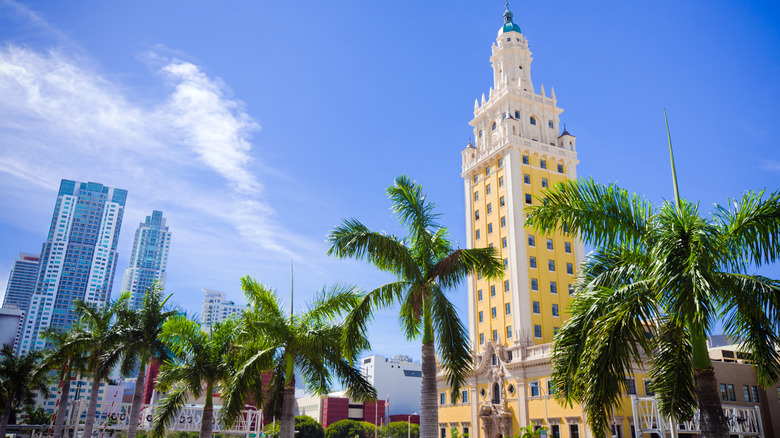Florida's 'Ellis Island Of The South' Is Named For Its Historic Significance And Is One Of The State's Most Iconic Landmarks
One of the most important symbols of the United States is the Statue of Liberty, which iconically welcomed arriving immigrants as they approached Ellis Island. For millions of people, it represented the promise of the American Dream. However, New York City is not the only place in the country that welcomed new arrivals by sea, and the Statue of Liberty isn't the only symbol of new beginnings.
Between 1962 and 1974, Miami's Freedom Tower was used as the Cuban Assistance Center. This was the first stop for thousands of Cuban refugees fleeing the country after Fidel Castro took power in 1959. Florida, being just 90 miles away from Cuba, was a natural port of entry, and in 1962, the U.S. government repurposed the existing building — originally a newspaper headquarters — into a welcome center that could help new arrivals set themselves up with healthcare, housing, and education. Seventeen stories tall and painted in a bright yellow with ornamental features in the Spanish Renaissance style, it became a fixture on the Miami skyline and was eventually known amongst Cuban exiles as "El Refugio."
Social services were provided in the building up until 1974, and after a few tumultuous decades under various owners, it was sold to Miami Dade College in 2005, which maintains the National Landmark as a free exhibition space. Here's what you need to know before you visit this piece of Miami history.
What to expect on a visit to the Freedom Tower in Miami
Little Havana may be the epicenter of Miami's Cuban community, but the Freedom Tower — located four miles away in Downtown Miami — is an important historic landmark that has been graciously preserved for the public good. After closing for restoration work, the building reopened to celebrate its centennial year in 2025 as a more expansive museum with new galleries telling the full history of Miami's first skyscraper.
The building's many embellishments, from the murals to the tiles, have been spruced up to restore their original glory. Museum exhibits will display art, photography, and digital exhibits, including a collection of oral history as told by over 300 Cuban families who trace their arrival in the U.S. back to this building. While you're in the city, consider a visit to Miami's oldest neighborhood for another fix of history in Coconut Grove.

